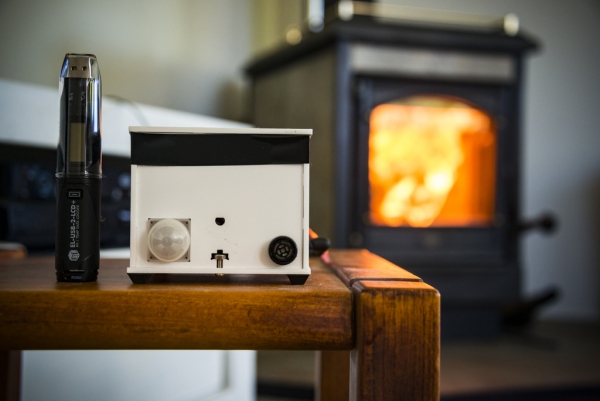2018: Alexandra
During the winter of 2018, NIWA ran a CONA study in Alexandra. The “What’s in your air, Alex?” project also featured Year 5 and 6 pupils from Alexandra Primary School helping NIWA air quality scientists learn more about pollution in their Central Otago town.
2015-2017 Rangiora
During the winters of 2015, 2016 and 2017, NIWA ran a pilot CONA study in the Canterbury town of Rangiora.
CONA employed new low-cost technologies to monitor smoke emissions in the town and gather data enabling NIWA’s air quality scientists to analyse how the smoke moves and disperses under different conditions, and how much pollution residents are exposed to. Outdoor air quality sensors—called ODINs (outdoor dust information node)—were deployed on lampposts around Rangiora. In addition, NIWA installed three new weather stations and deployed weather balloons to take readings from the lower levels of the atmosphere.
Temperature sensors were also placed in the volunteers’ homes to monitor home-heating and temperature changes.
Rangiora CONA - what did we learn?
The Rangiora CONA study confirmed that NIWA’s new monitoring technologies provide valuable new information about pollution levels at different times of the day and under different weather conditions.
The PACMAN units indicated differences in indoor air quality between homes, and that these differences were influenced by both indoor emission sources (such as cooking and cigarette smoking) and the infiltration of smoke from outdoors. The ODIN units indicated that air quality varied across the town from night to night in complex ways, which are likely to be related to variations in air flow moving smoke in different directions (as indicated by the meteorological observations). There was quite a lot of variation in how people heated their homes, with a mixture of habit and random variation, and in how well homes gained, retained or lost heat. Rangiora’s air quality appears to be worse on winter evenings when the wind direction switches, possibly leading to polluted air being ‘re-circulated’ around the town.
The study revealed the value of direct community involvement in efforts to better understand the sources and behaviour of localised air pollution. Such involvement promotes ‘ownership’ of the issue by residents, which in turn aids efforts by local authorities to evaluate, set and implement mitigation strategies.
Communicating goals and outcomes
The success of the Rangiora CONA study was aided by engagement and communication with participants, the wider community and other stakeholders at every step.
NIWA employed a wide range of communications platforms, including mainstream and social media, a blog, and animated visualisations of the data collected, to explain the goals, methodologies and outcomes of the study.
Individual reports were produced for each volunteer participant, showing how measurements from their home compared to overall results.
NIWA also developed an online data portal for advanced analysis of the study results.


